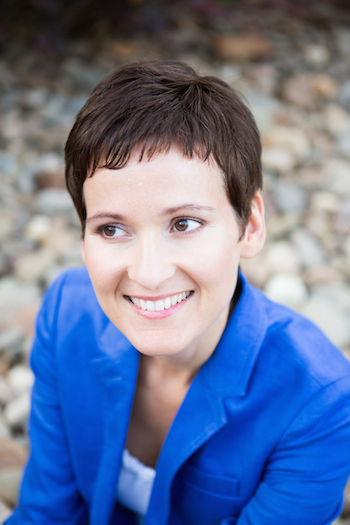Physical Therapy, Yoga, and Childbirth Education
This post was written by H&W instructor Ginger Garner, MPT, ATC, PYT. Ginger will be instructing the course that she wrote on "Yoga as Medicine for Labor and Delivery and Postpartum" in Washington this August.

Physical therapists often see women during pregnancy and postpartum, but what can physical therapists do to foster better birth outcomes?
A 2012 study conducted in Norway underscores the importance of childbirth education, which can take place as part of patient education and counseling in physical therapy. The study looked at 2206 women with intended vaginal delivery in order to assess the association between fear of childbirth and duration of labor. Labor duration was found to be significantly longer in women with fear of childbirth, with the rate of epidural analgesia, induction, and instrumental vaginal delivery also being higher in fearful women. The authors posit that “anxiety and fear may increase plasma concentrations of catecholamines, and high concentrations of catecholamines have been associated with both enervated uterine contractility and a prolonged second stage of labour.” (Adams et al 2012).
Yoga is a mind-body intervention that is supported to lower pain perception, anxiety, reported stress, and discomfort, all variables that can improve overall birth outcomes and reduce fear of childbirth. Integrative physical therapy practice uses a biopsychosocial model, one that uses energetic, emotional, physical, intellectual, and spiritual support methods to prepare a mother for her labor, delivery, and beyond. Mason et al (2013), in a study that compared standard diaphragmatic breathing to yogic breathing, found yogic breathing to be superior in all measured areas, including increasing/affecting: 1) cardiac-vagal baroreflex sensitivity, 2) oxygen saturation, 3) oxygen absorption, 4) tidal volume, 5) vagal stimulation, 6) parasympathetic activation, and 7) overall reported physical and mental health.
Yoga can address more than just flexibility or relaxation for laboring moms. It fosters calm awareness, mind-body concentration and focus, develops postural control and lumbopelvic health, including neural and myofascial health and motor patterning, all of which, combined with conventional physical therapy practice, can be more efficacious than exercise prescription or childbirth education alone. Ginger’s course, Yoga as Medicine for Labor, Delivery, and Postpartum addresses the systems-based changes of the pregnant patient, and prepares the physical therapist to meet the needs of the laboring or new mom with a mind-body holistic perspective.
To learn more about Ginger’s course, visit Yoga as Medicine for Labor, Delivery, and Postpartum
By accepting you will be accessing a service provided by a third-party external to https://hermanwallace.com/






































